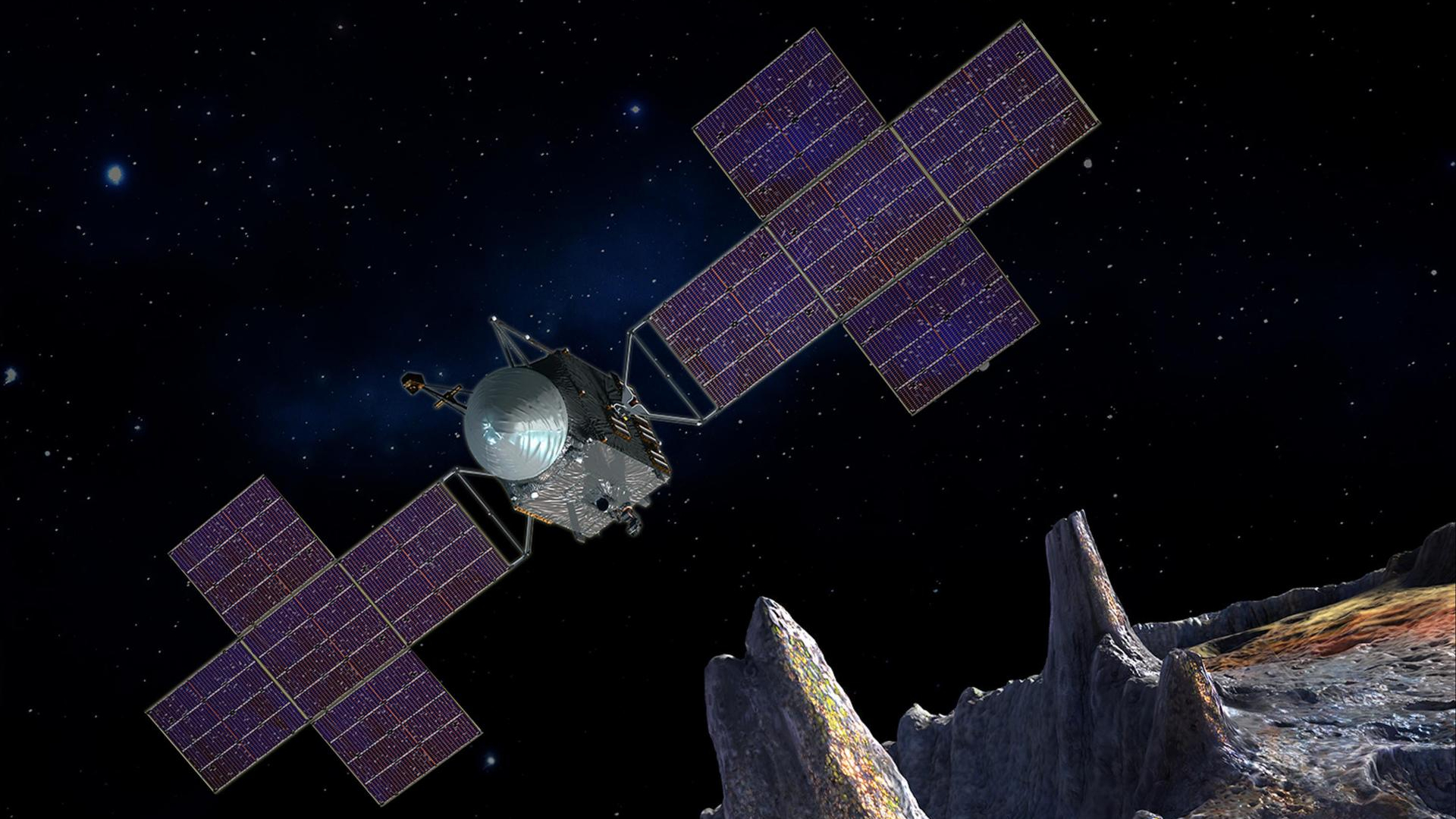NASA delays launch of Psyche asteroid mission by 1 week, to Oct. 12

We'll have to wait another week to see NASA's Psyche asteroid mission take flight.
Psyche had been scheduled to launch atop a SpaceX Falcon Heavy rocket from NASA's Kennedy Space Center (KSC) in Florida on Oct. 5. But that's no longer the plan; the mission team has pushed the liftoff back to Oct. 12.
"The change allows the NASA team to complete verifications of the parameters used to control the Psyche spacecraft's nitrogen cold gas thrusters," NASA officials wrote in an update on Thursday evening (Sept. 28).
"The parameters were recently adjusted in response to updated, warmer temperature predictions for these thrusters," they added. "Operating the thrusters within temperature limits is essential to ensure the long-term health of the units."
Related: NASA's Psyche asteroid probe on track for October launch after 1-year delay
The one-week delay cuts considerably into Psyche's launch window, which runs through Oct. 25.
The slip was announced the same day that the NASA, SpaceX and Psyche mission managers conducted a flight readiness review at KSC. During that meeting, a go-ahead was given to perform a "static fire" of the Falcon Heavy on Friday (Sept. 29), NASA officials said. Static fires are standard prelaunch tests, in which a rocket's first-stage engines are fired briefly while the vehicle remains anchored to the ground.
Breaking space news, the latest updates on rocket launches, skywatching events and more!
The Psyche launch will be just the eighth overally for the Falcon Heavy, the second-most powerful rocket currently in operation after NASA's Space Launch System. Psyche will be the first NASA mission for the Heavy.
The $1.2 billion Psyche mission will study a bizarre metallic asteroid of the same name. If all goes according to plan, the spacecraft will arrive at the 170-mile-wide (280 kilometers) space rock Psyche, which resides in the main asteroid belt between Mars and Jupiter, in 2029.
Scientists think Psyche may be the exposed core of a protoplanet — the building blocks of worlds such as Earth — whose rocky outer layers were stripped away by one or more violent impacts. Humanity has never seen such an object up close before.
"I am so looking forward to seeing those first images," Lori Glaze, director of NASA's Planetary Sciences Division, said during a news conference on Sept. 6. "They are going to be spectacular, when we finally get to see what this metal looks like up close."

Michael Wall is a Senior Space Writer with Space.com and joined the team in 2010. He primarily covers exoplanets, spaceflight and military space, but has been known to dabble in the space art beat. His book about the search for alien life, "Out There," was published on Nov. 13, 2018. Before becoming a science writer, Michael worked as a herpetologist and wildlife biologist. He has a Ph.D. in evolutionary biology from the University of Sydney, Australia, a bachelor's degree from the University of Arizona, and a graduate certificate in science writing from the University of California, Santa Cruz. To find out what his latest project is, you can follow Michael on Twitter.
